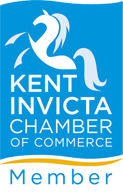- Home
- Structured Networking

Working with dynamic and adventurous companies; guiding and supporting you on your IT journey, our approachable team respond swiftly and talk in plain language so you can focus on your business and profit


Company Address
Come and visit us at our new offices in Maidstone
Address: Suite 49 Maidstone Innov. Centre, ME14 5FY
Phone: 0330 088 8058
Email: info@itdesk.io
Copyright © GWT Media Ltd all rights reserved.


Structured Cabling
We are living in the information age. Technology is becoming a more regular and important part of people’s everyday lives. With such demand computer systems are becoming faster and faster, storing more and accessing it quicker. Data is not confined to one piece of hardware, but is liberated via networks to be shared and simultaneously accessed by many users. However, while many businesses find it easy to invest in computer systems the network cabling is often neglected. It is time to think of your cabling system as an investment.
Why is cabling an important part of your IT?
Cabling can have a big impact on the quality of your data travelling across your network. You could think about cabling as travelling on a solid or dirt road. Although you will arrive at your destination on both, the quality of your journey will be considerably affected. This can be bad for your network. Networks work by sending your data in small packets. These packets provide information for redundancy checking, enabling your system to make sure there are no errors in your data. If it is determined that the packet does contain errors, a request is made for the packet to be resent. Although this process happens in a short period of time, these can add up and quickly cause bottlenecks in the flow of data – the same way as a traffic jam would stack up if too many people decided to perform U-turns! Bad cabling greatly increase the chances of these bottlenecks appearing as your network gets busier. These problems are also notoriously hard to diagnose, increasing your support costs.
Why should you invest in your cabling?
Cabling has some of the longest running standards in the IT industry – CAT5e, CAT6, CAT6a, CAT7 and Fibre – with most cabling systems being designed to run for a minimum of 10 years after the installation date. So much so that approved installers are able to offer guarantees that range from 10 years to lifetime of the installation. Comparing this to other technology lifespans in your IT infrastructure it makes clear sense to invest in your cabling infrastructure.
Although a fresh installation and planned installation is advisable to make sure your cabling is up to standard, this is not always required. Your existing cabling system can be tested to identify whether it is up to standard or failing, and then put right.
Ask for certification!
Many cabling installers will test your cable installation with basic testing tools. Although these tests make sure the cable is connected correctly, they do not guarantee the quality of the installation. An approved installer of your selected cabling system will use a TDR to test and certify your system. They will be able to provide you with a test certificate highlighting the consistency of each installed cable.
How can we help
We offer a number of services to help with your cabling needs, these include:
If you are interested in using our network and infrastructure services, please contact us for a free no obligation chat.
Recent Posts
Recent Comments
Popular Categories
Popular Tags
Archives